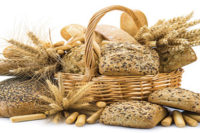It’s a confusing time to try and maintain a healthy diet and weight. There’s so much conflicting advice on what to eat and what to avoid. Things that once were forbidden are now encouraged. Take butter, for instance. A few months back, a New York Times article boldly proclaimed that “Butter Is Back,” after years of being demonized during the fat-free craze of the 1990s. You can see where these diet dilemmas have stemmed from.
With nutrition science always evolving, deciding what exactly you should be putting into your products can be a real challenge. One such topic that’s up for debate: How much protein should we consume as part of this seemingly elusive healthy diet?
Protein helps to build, maintain and repair body tissues. Diets like Atkins, Paleo and Dukan encourage high levels of the nutrient, and high-protein diets are often linked to weight loss. But new studies show that low-protein diets could be more beneficial for consumers younger than 65. The fact of the matter is that much more research needs to be done before we can draw any definitive conclusion.
As executive director of the Grain Foods Foundation (GFF), I work with an extremely talented group of experts who keep me informed on these types of nutrition issues. I’ve learned that the safest and surest path to weight maintenance and healthful eating during these confusing times is to follow a balanced plan. For example, the U.S. Department of Agriculture’s (USDA) MyPlate nutrition guide encourages consuming a mix of foods that run the gamut from fruits and veggies to grains and, yes, protein. I serve as a national strategic partner for MyPlate, and I’ve taken to heart what I’ve learned about the plan.
With the summer months here, and lighter fare being more popular, protein (in the form of burgers, chicken and beans) is often the center of attention, but food from other groups, like grains, should also be at the table. There are plenty of opportunities to incorporate foods from the protein sector, aside from the most obvious ones. For example, peanuts and tree nuts are high in protein and are the perfect addition to many snacks and baked goods. Grains provide many vital nutrients for our body’s health and maintenance and come in many forms. On the GFF website, GrainsforYourBrain.org, we feature various recipe ideas.
There are plenty of resources with real science from experts that can help you experiment with more protein-related food choices. For example, the MyPlate site (www.choosemyplate.gov) is chock-full of tips, advice and recipes. My team at the GFF has compiled expert insights, answers to frequently asked questions and some great recipes and meal plans that make it easier to eat, bake and prepare healthy foods at GrainsforYourBrain.org.
The USDA also has some great tools for customizing meals plans based on gender, weight, physical activity and age. Our nutritional requirements change as we move through different life stages, so while the MyPlate model is a great way to ensure people eat well, it’s key to modify what we eat as we age. For example, studies show that for adults over 65, high-protein diets are linked with lower mortality.
Overall, a healthy diet shouldn’t be one that changes with the seasons. Including protein may be popular today, but it’s also a wise choice for a meal plan any time to ensure lifelong healthfulness.
Christine Cochran, executive director of the Grain Foods Foundation (GFF), is past president of a Washington-based trade association representing commodity futures exchanges and exchange participants.



